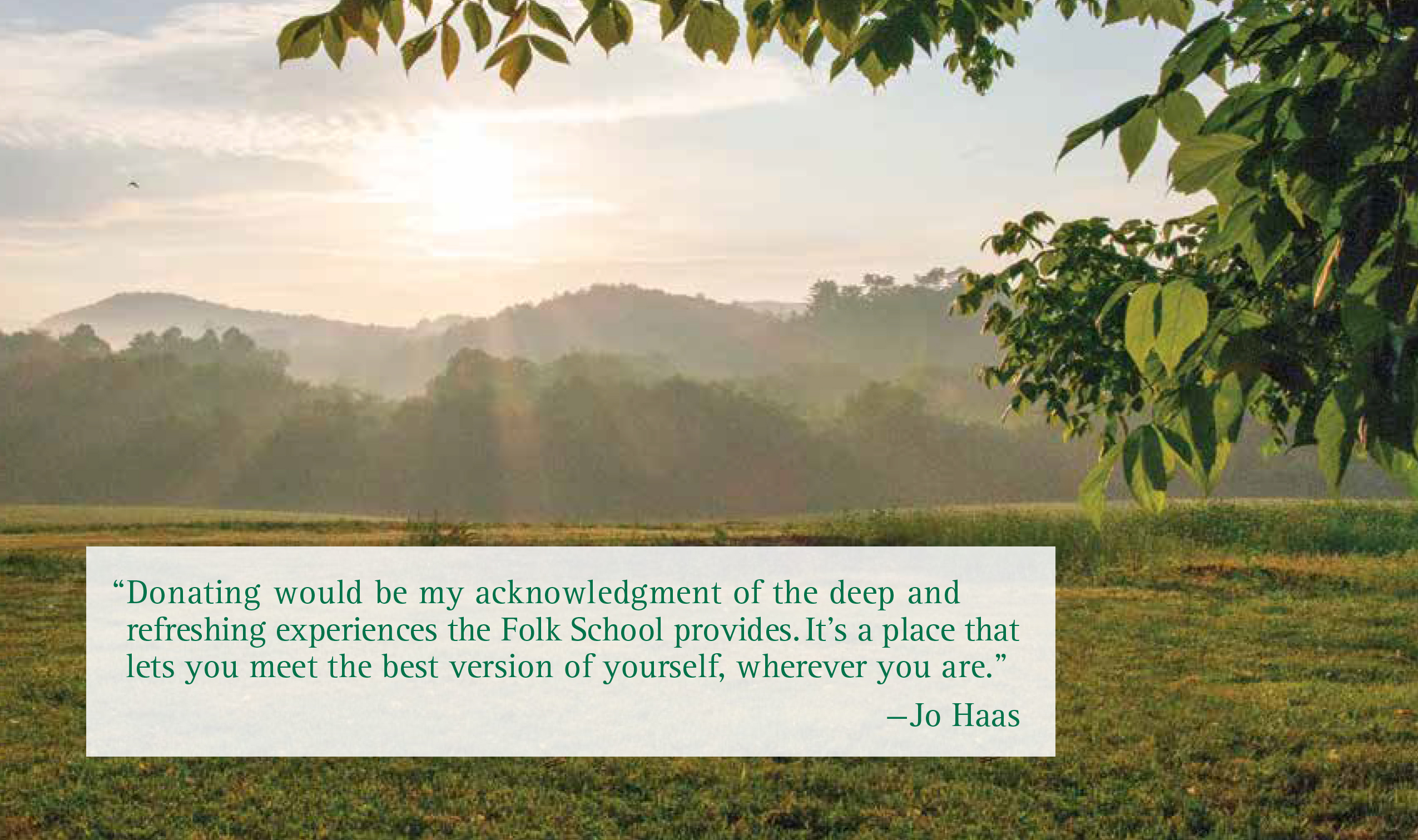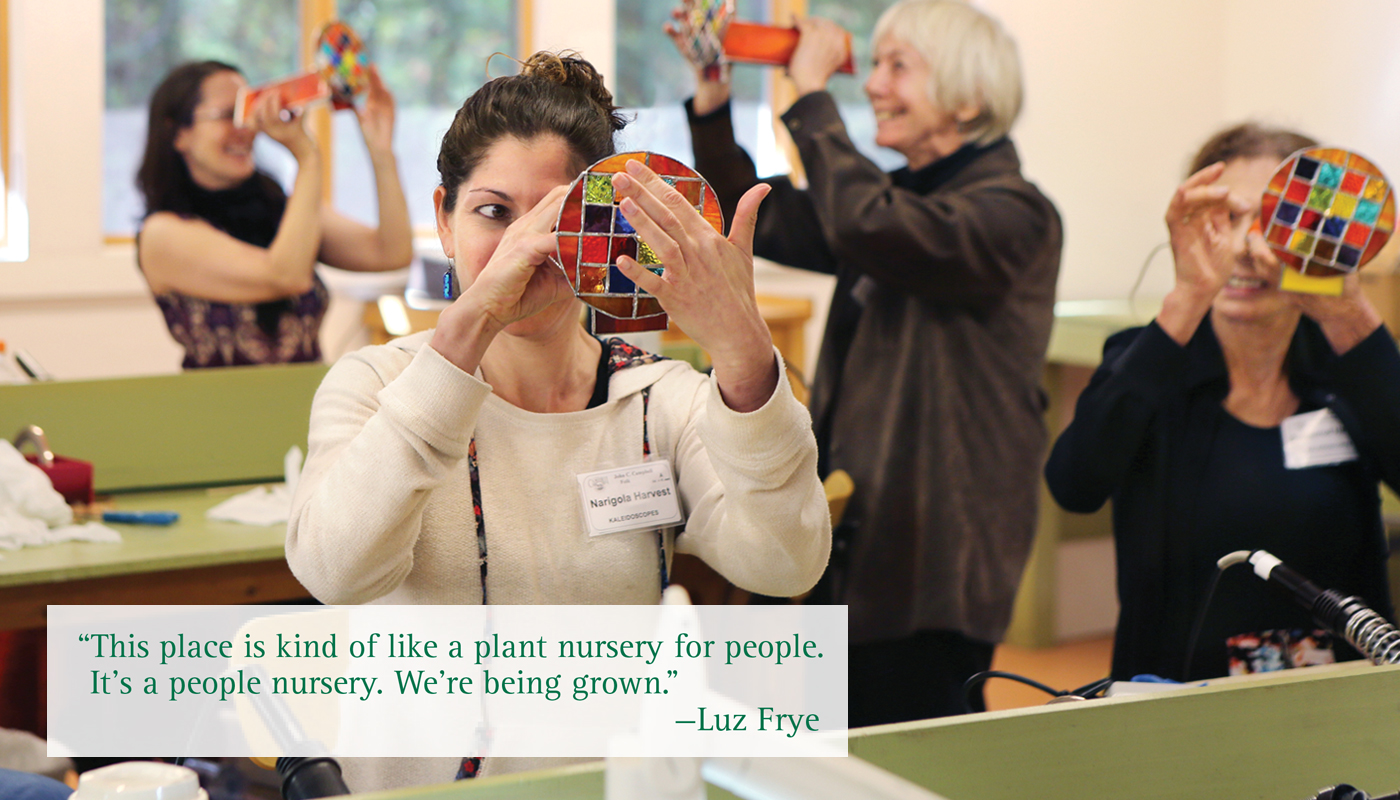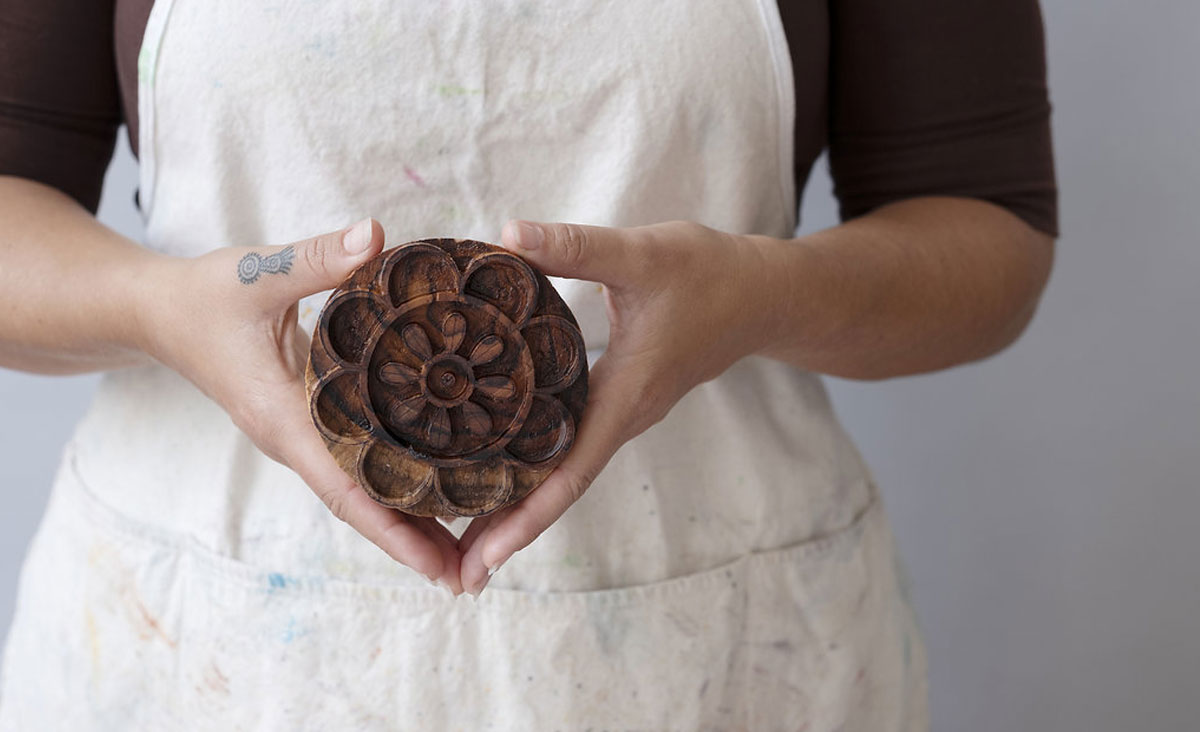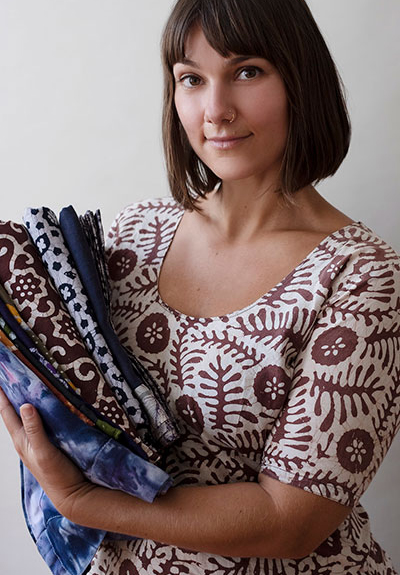27 Apr A Look at Southern Scrap Quilts with Pepper Cory
One of Pepper’s specialties is...

One of Pepper’s specialties is...

“Our worlds are crazy. We have so many demands on our time and attention, and we get so wrapped up in delivering for other people.” Jo was seeking something that would kick off the first week of an annual four-week sabbatical; one that would be decidedly “therapeutic and peaceful.”
“I didn’t use my car once the entire week. I slept in Mill House and would walk up that hill through the mist each morning to Keith House for MorningSong. Like where else do you get that: someone singing to you in the morning while you drink your coffee?!”
Imagine transforming your trash into...
When you take a Folk...
For only $173, you can...
The Sunday sun was sinking...
 After months of discussion with our Folk School family, we have a new mission statement: The Folk School transforms lives, bringing people together in a nurturing environment for experiences in learning and community life that spark self-discovery.
Using her own creative imagery, student and donor Luz Frye voiced the same sentiment when she and her husband, John, were here last month for our Fall Festival, followed by a week of classes. “This place is kind of like a plant nursery for people. It’s a people nursery. We’re being grown.”
John agreed, saying, “We see that people are engaged in improving themselves and bringing themselves joy. Then you combine that with meeting people from all over who you never would have had a chance to meet. It’s a pretty unbelievable place in terms of how people come together.”
After months of discussion with our Folk School family, we have a new mission statement: The Folk School transforms lives, bringing people together in a nurturing environment for experiences in learning and community life that spark self-discovery.
Using her own creative imagery, student and donor Luz Frye voiced the same sentiment when she and her husband, John, were here last month for our Fall Festival, followed by a week of classes. “This place is kind of like a plant nursery for people. It’s a people nursery. We’re being grown.”
John agreed, saying, “We see that people are engaged in improving themselves and bringing themselves joy. Then you combine that with meeting people from all over who you never would have had a chance to meet. It’s a pretty unbelievable place in terms of how people come together.”
 Have you ever wanted to try batik and hand-dyeing? We have a very special surface design class coming up on January 12–18, 2020 with Jessica Kaufman: Studio Batik: Many Techniques, Amazing Results. Jessica has studied batik methods from Indonesia and India and is the owner of WAXON Batik & Dye Studio in Asheville, NC. With over 16 years of teaching experience and an MA in crafts education, Jessica has taught batik and tie-dye to summer campers, school children, high schoolers, and adults all over the country. We are lucky to have her for a week-long intensive focusing on this gorgeous and functional art form. Enjoy our interview!
[caption id="attachment_18944" align="alignright" width="209"]
Have you ever wanted to try batik and hand-dyeing? We have a very special surface design class coming up on January 12–18, 2020 with Jessica Kaufman: Studio Batik: Many Techniques, Amazing Results. Jessica has studied batik methods from Indonesia and India and is the owner of WAXON Batik & Dye Studio in Asheville, NC. With over 16 years of teaching experience and an MA in crafts education, Jessica has taught batik and tie-dye to summer campers, school children, high schoolers, and adults all over the country. We are lucky to have her for a week-long intensive focusing on this gorgeous and functional art form. Enjoy our interview!
[caption id="attachment_18944" align="alignright" width="209"] Photo by Nicole McConville[/caption]
CP: When did you first come to the Folk School? When were you a host?
JK: I grew up with relatives in Penland and would visit the school for community days, but couldn’t align my work schedule in a way that would allow me to take a class there when I was a young full-time teacher. Someone suggested I take a look at the John C. Campbell Folk School and it was absolute love at first sight. The week-long classes, offered year-round, were a dream come true.
I saved my pennies and booked a clay class over my spring break in 2005. I was teaching in a Haywood County public school and this class just lined up with my vacation days. Ted Cooley was our class assistant and two young women I knew from Asheville were the Hosts. I immediately saw the potential for myself there. I took a few more classes as a student, and then, in 2009, I served six months as Host. I was the last six-month host (the school went to a four-month system after that) but I wished it was still a 2-year position, as it was in Ellie Wilson’s time. I would have signed up instantly for that!
Photo by Nicole McConville[/caption]
CP: When did you first come to the Folk School? When were you a host?
JK: I grew up with relatives in Penland and would visit the school for community days, but couldn’t align my work schedule in a way that would allow me to take a class there when I was a young full-time teacher. Someone suggested I take a look at the John C. Campbell Folk School and it was absolute love at first sight. The week-long classes, offered year-round, were a dream come true.
I saved my pennies and booked a clay class over my spring break in 2005. I was teaching in a Haywood County public school and this class just lined up with my vacation days. Ted Cooley was our class assistant and two young women I knew from Asheville were the Hosts. I immediately saw the potential for myself there. I took a few more classes as a student, and then, in 2009, I served six months as Host. I was the last six-month host (the school went to a four-month system after that) but I wished it was still a 2-year position, as it was in Ellie Wilson’s time. I would have signed up instantly for that!
I met with chef Patrick...
Have you always been drawn...


